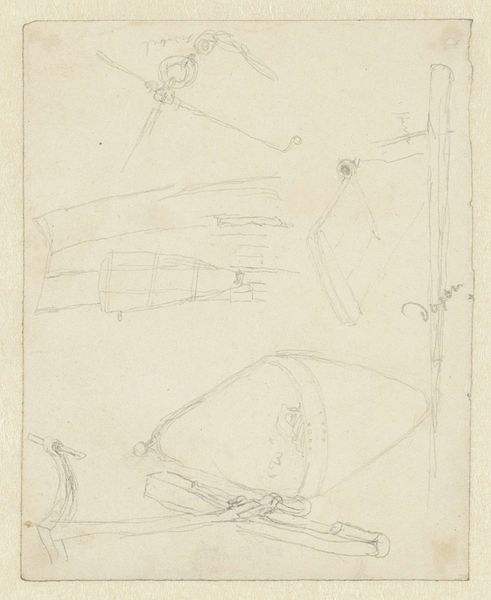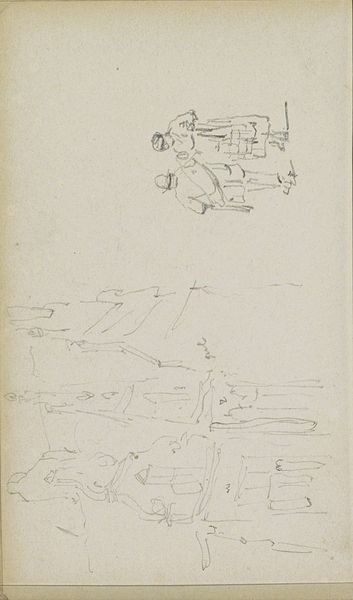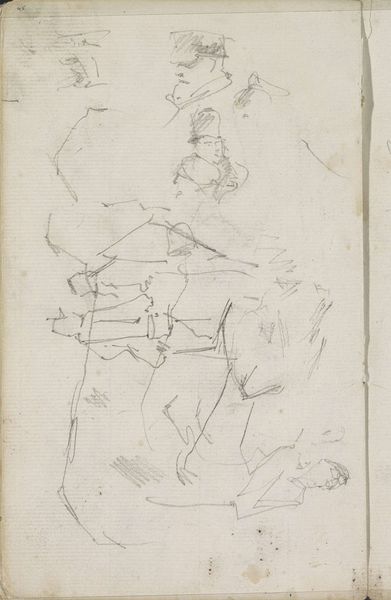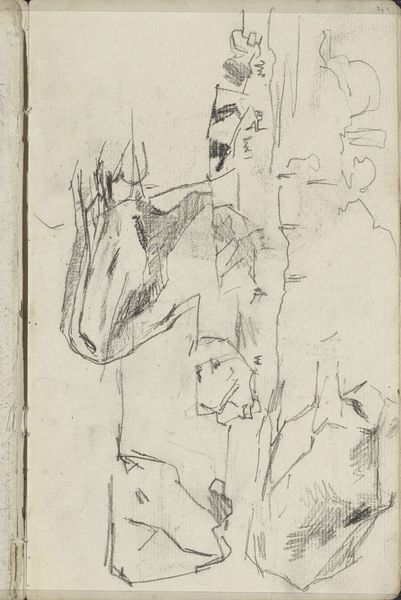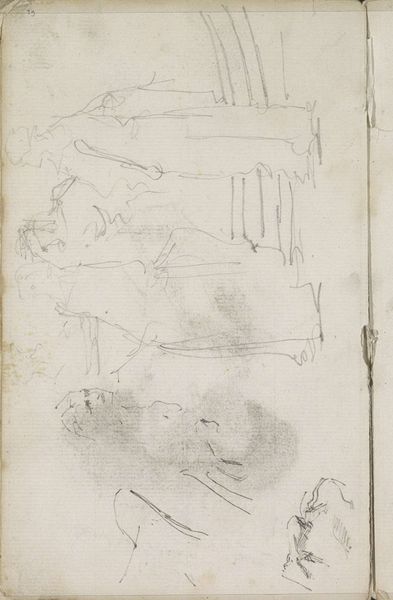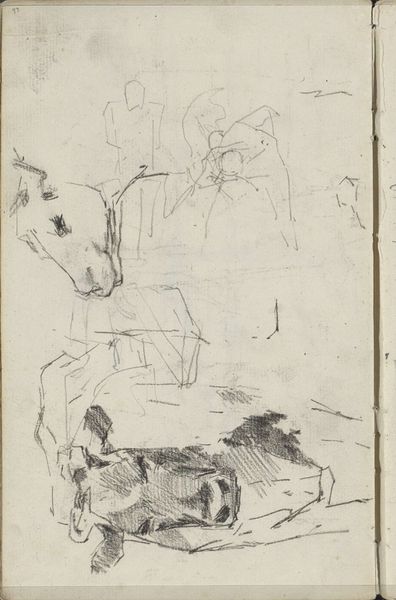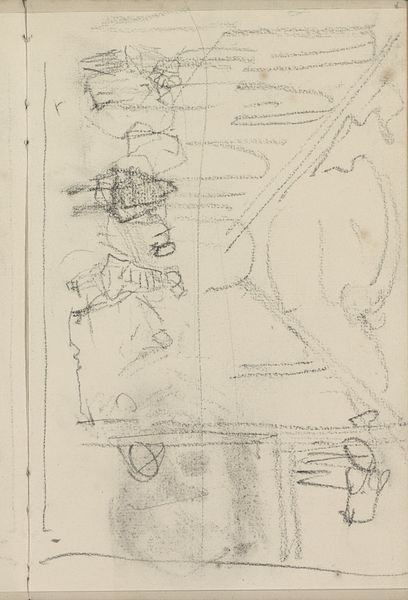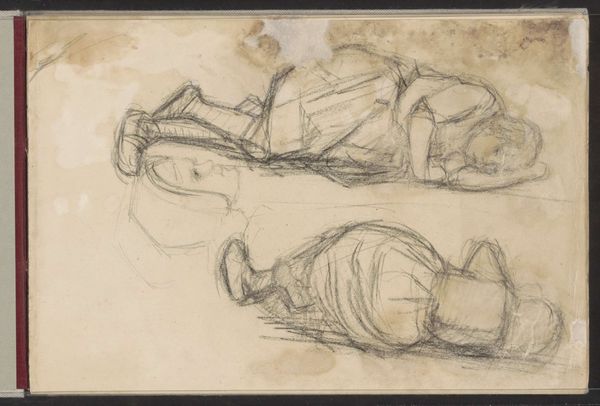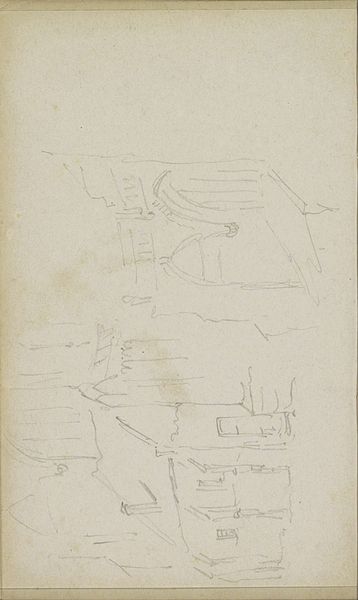
drawing, paper, pencil
#
portrait
#
drawing
#
impressionism
#
figuration
#
paper
#
pencil
#
line
Copyright: Rijks Museum: Open Domain
Curator: Here we have George Hendrik Breitner’s drawing, “Twee vrouwen tegenover elkaar,” or “Two Women Facing Each Other,” created sometime between 1884 and 1886. It's a pencil drawing on paper. Editor: The immediacy of the lines strikes me. There’s a quiet energy, even in its unfinished state. I can feel the artist capturing a fleeting moment, a glimpse of everyday life. Curator: Absolutely. Consider the medium—pencil on paper. It suggests a sketch, a preliminary study. Breitner was known for capturing the raw reality of Amsterdam, its working class and bustling streets. This likely captures a preparatory sketch that reflects a turn towards impressionism as a stylistic choice. It challenges traditional notions of "finished" artwork, embracing the process and labor involved in making art. Editor: And yet, despite its seeming incompleteness, there's such evocative imagery here. The woman leaning over suggests fatigue or perhaps concern for the figure opposite her. There’s a clear contrast of one standing in action versus another seated, at rest perhaps, creating implied stories that draw you in, demanding you ask what they suggest or recall. Curator: We have to also remember that it wasn’t considered unusual in this period for many artworks to focus on figuration in sketches and painting alike; after all, portraiture captured and signified one’s status at any stage, finished or no. Editor: The figures lack specific details; perhaps they stand for collective memories, recalling countless acts of kindness and solace exchanged across generations. The drawing invites empathy. Are these symbolic representations or memories distilled and expressed as social realities, making commentary on a societal stage, no? Curator: Interesting. We can think about paper production as material commodity, made for purposes, though it often bears social values due to their status of artwork. In this, we have art for itself and a value based upon how labor transforms matter to artwork and something precious. Editor: It gives pause to our appreciation of quotidian things through visual rendering and reminds the viewer to attend to that which might be forgotten or unacknowledged. Curator: Thinking about the production, too, is a political move in understanding not only Breitner's artwork, but how the society around the artist produces meaning. Editor: Well, considering its symbolic and real function, the artist's choices here truly offer profound questions regarding humans, art and culture. Curator: Indeed; and for the relationship between materiality, making, and message!
Comments
No comments
Be the first to comment and join the conversation on the ultimate creative platform.
